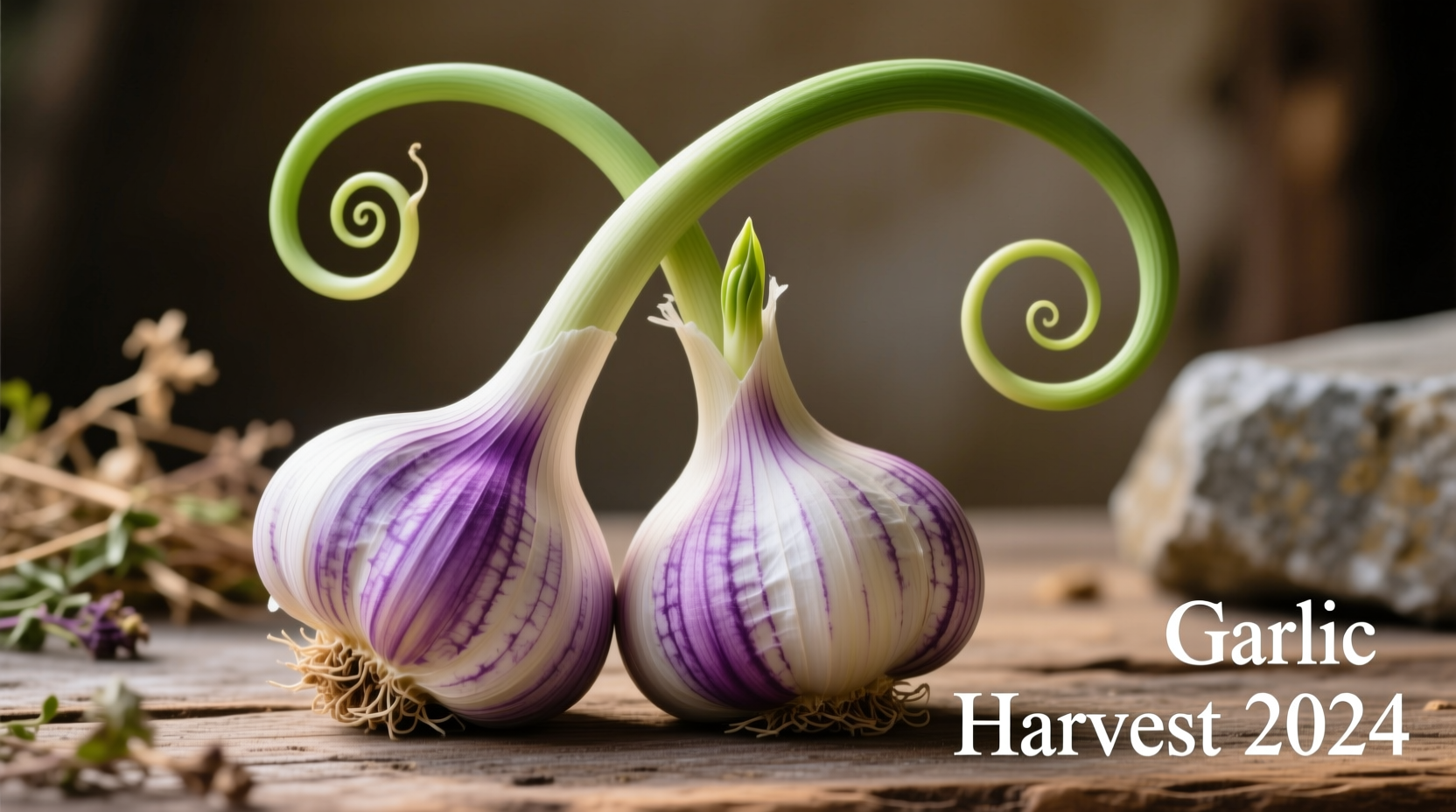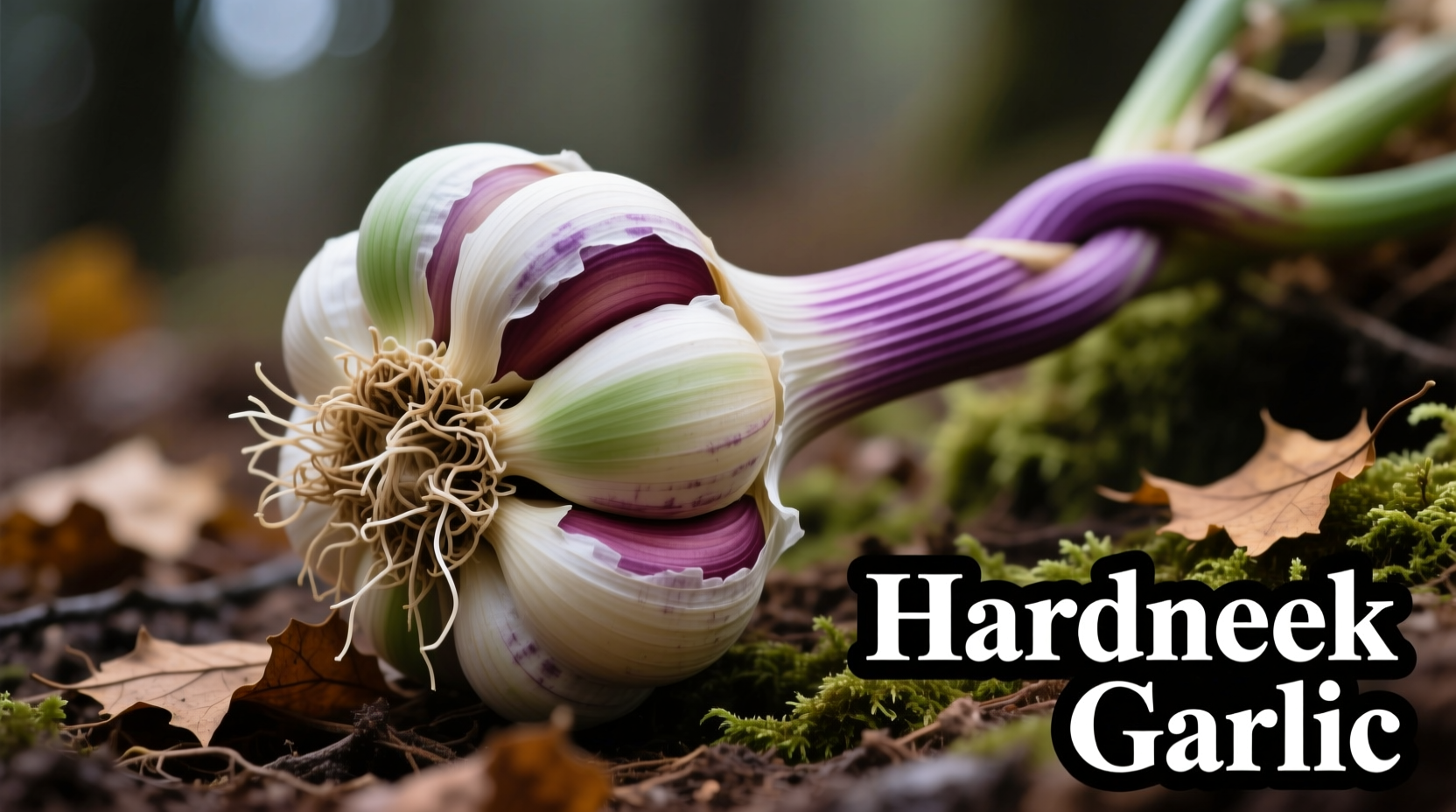Hardneck garlic (Allium sativum var. ophioscorodon) delivers superior flavor, cold-hardiness, and distinctive scapes compared to softneck varieties. Gardeners in USDA zones 3-7 gain earlier harvests, chefs benefit from complex flavor profiles, and home growers enjoy the dual harvest of garlic bulbs plus edible scapes—all while avoiding the braiding limitations of softneck types.
What Exactly Makes Garlic "Hardneck"?
Hardneck garlic earns its name from the rigid central flowering stalk (scape) that forms in spring. Unlike softneck varieties, hardnecks produce this stiff stem that eventually develops a flower bulbil cluster. This biological difference creates several practical advantages for growers and cooks alike.
| Characteristic | Hardneck Garlic | Softneck Garlic |
|---|---|---|
| Cold Tolerance | Excellent (USDA zones 3-7) | Moderate (zones 7-9) |
| Flavor Intensity | Bold, complex, varies by variety | Milder, more uniform |
| Storage Life | 5-8 months | 9-12 months |
| Edible Scapes | Yes (harvested in late spring) | No |
| Braiding Capability | Poor (stiff stalks) | Excellent |
Why Hardneck Garlic Offers Superior Flavor Complexity
Professional chefs consistently choose hardneck varieties for their nuanced flavor profiles. The complex compounds in hardneck garlic—particularly allicin and ajoene—develop more pronounced notes when exposed to cold temperatures during growth. This cold exposure triggers biochemical changes that create deeper, more varied flavor dimensions compared to softneck types.
According to research from the University of California's Agriculture and Natural Resources department, hardneck garlic contains up to 30% more sulfur compounds than softneck varieties, directly contributing to its richer taste and aroma. These compounds also provide enhanced health benefits, including stronger antioxidant properties.

Optimal Growing Conditions for Hardneck Garlic
Hardneck garlic thrives in regions with distinct seasonal changes. For best results, plant cloves 4-6 weeks before your first expected frost date—typically September to November in northern climates. The critical cold exposure period (vernalization) requires at least 40 days below 40°F (4°C) to trigger proper bulb formation.
Soil preparation makes a significant difference in your harvest. Amend your garden bed with 3 inches of compost and a balanced organic fertilizer before planting. Maintain consistent moisture during active growth periods, but reduce watering as harvest approaches to prevent bulb rot. The USDA Natural Resources Conservation Service recommends maintaining soil pH between 6.0-7.5 for optimal garlic growth.
Harvesting Timeline: From Planting to Plate
Understanding the hardneck garlic growth cycle ensures perfect timing for each harvest stage:
- September-October: Plant cloves pointy-end up, 2 inches deep, 6 inches apart
- November-January: Cold dormancy period (critical for bulb development)
- April-May: Scape emergence—harvest when curling begins
- June-July: Bulb harvest when lower leaves yellow (50% green remaining)
- August: Complete curing in dry, shaded area
Missing the narrow scape harvesting window means losing this valuable secondary crop. The University of Maine Cooperative Extension notes that removing scapes redirects energy to bulb development, increasing final bulb size by 15-25%.
Culinary Applications: Maximizing Hardneck's Flavor Potential
Hardneck garlic's flavor shines when used thoughtfully in cooking. For raw applications, try the milder Rocambole varieties in salad dressings and aiolis. When roasting, Porcelain types develop exceptional sweetness that complements meats and vegetables. The distinctive purple-streaked varieties add visual appeal to dishes while delivering nuanced heat.
Professional chefs recommend these techniques for extracting maximum flavor:
- Crush cloves with the flat of your knife before chopping to release more flavor compounds
- Add garlic to hot oil after other aromatics (like onions) to prevent burning
- Use scapes as a substitute for garlic cloves in early summer recipes
- Roast whole bulbs for spreadable, mellow garlic flavor
Storage Guidelines for Long-Lasting Quality
Proper storage extends hardneck garlic's shelf life significantly. After curing for 3-4 weeks in a well-ventilated area, store bulbs in mesh bags or open baskets at 55-65°F (13-18°C) with 60-70% humidity. Avoid refrigeration, which triggers sprouting.
Signs your stored garlic is declining include:
- Soft or mushy spots
- Excessive sprouting (small sprouts are normal)
- Mold development
- Loss of papery wrapper
For extended preservation, freeze minced garlic in olive oil or create garlic-infused vinegar—methods that maintain hardneck's distinctive flavor profile for months.
Top Hardneck Varieties for Home Gardeners
Choosing the right hardneck variety depends on your climate and flavor preferences:
- Rocambole (Spanish Roja, Killarney Red): Complex, nutty flavor; excellent cold tolerance; best for zones 3-6
- Porcelain (Georgian Crystal, Music): Bold, spicy flavor; large cloves; ideal for zones 4-7
- Purple Stripe (Siberian, Chesnok Red): Rich, complex flavor; beautiful purple streaks; performs well in zones 3-7
- Glazed (Bogatyr): Unique sweet-spicy balance; good storage; suitable for zones 4-8
Local agricultural extensions provide valuable guidance on variety selection. The Cornell University Cooperative Extension maintains a comprehensive database of garlic varieties tested in northern climates, helping gardeners match varieties to specific regional conditions.
Frequently Asked Questions
Here are answers to common questions about growing and using hardneck garlic:
When is the best time to plant hardneck garlic?
Plant hardneck garlic cloves 4-6 weeks before your first expected frost date, typically September to November in northern climates. This timing ensures cloves experience the required 40+ days of cold temperatures below 40°F (4°C) for proper bulb development.
Why do hardneck garlic varieties produce scapes?
Hardneck garlic produces scapes as part of its natural flowering process. The stiff central stalk develops in spring and would eventually produce bulbils (tiny garlic cloves) if left unharvested. Removing scapes redirects the plant's energy to bulb development, increasing final bulb size by 15-25%.
How does hardneck garlic's flavor differ from softneck?
Hardneck garlic typically offers more complex, robust flavors with greater variation between varieties. Cold exposure during growth triggers biochemical changes that create deeper flavor dimensions. Research shows hardneck contains up to 30% more sulfur compounds than softneck, contributing to its richer taste and stronger aroma.
Can I grow hardneck garlic in warm climates?
Hardneck garlic requires significant cold exposure (vernalization) to form proper bulbs, making it challenging in zones 8 and higher. Gardeners in warm climates can try pre-chilling cloves in the refrigerator for 4-8 weeks before planting, but softneck varieties generally perform better in southern regions with mild winters.
How should I store hardneck garlic after harvest?
After curing for 3-4 weeks in a well-ventilated area, store hardneck garlic at 55-65°F (13-18°C) with 60-70% humidity. Use mesh bags or open baskets in a dark location. Properly stored hardneck typically lasts 5-8 months, compared to softneck's 9-12 month storage life.











 浙公网安备
33010002000092号
浙公网安备
33010002000092号 浙B2-20120091-4
浙B2-20120091-4